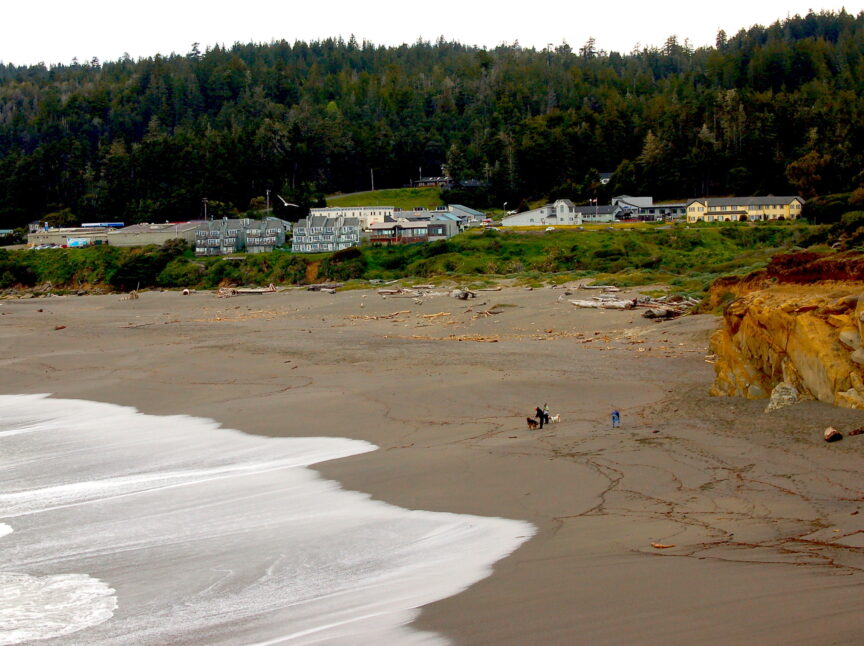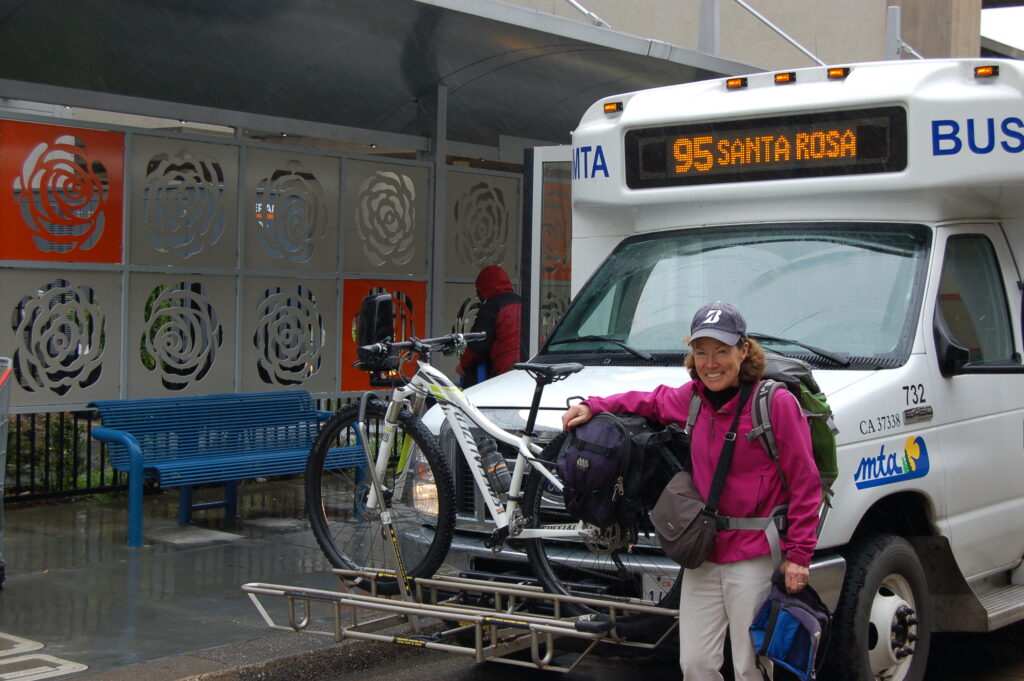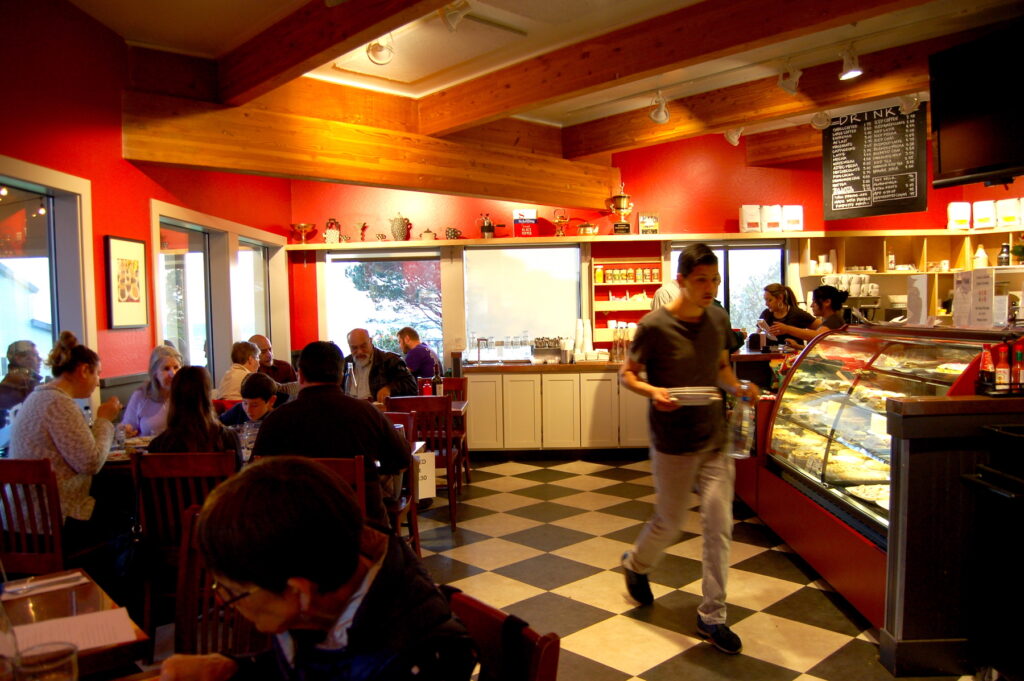An Adventure in Sustainable Tourism
By Suzanne Pletcher
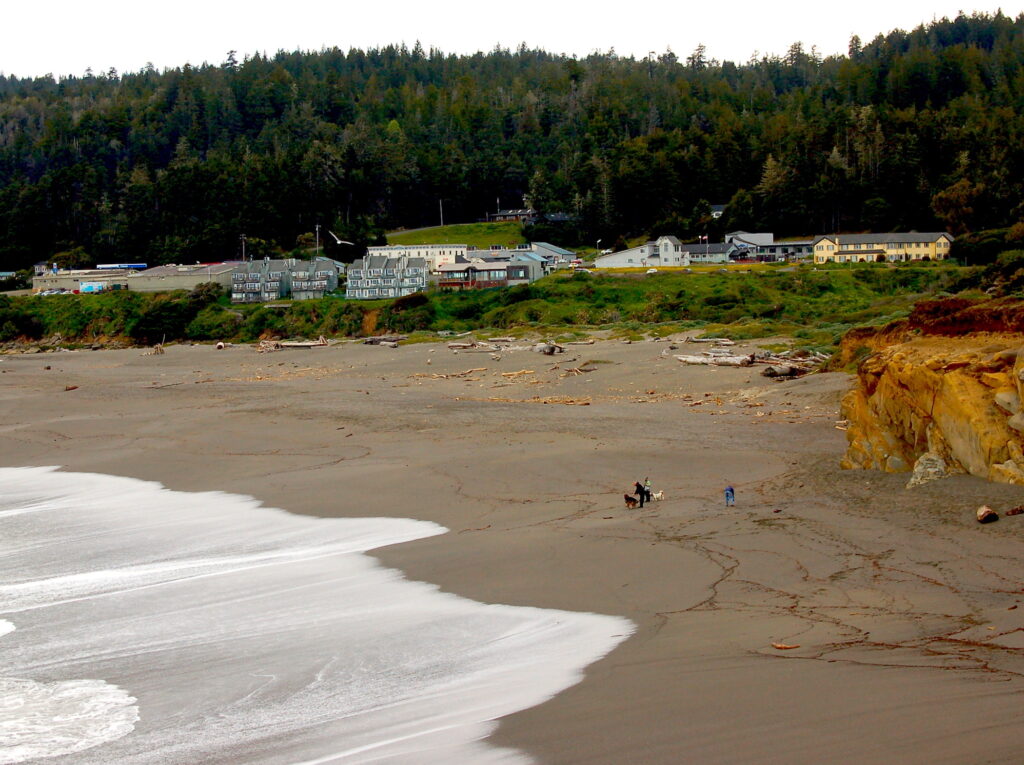
Why travel halfway around the world for a bike adventure featuring great scenery when there are some bike trip gems in your own backyard? I’ve lived in 12 states over the past four decades and along the way discovered that, almost anywhere you live, bucolic countryside awaits and offers a low-cost and invigorating getaway. String together a few weekends of the best spots in your area and you’ll discover—or rediscover—some good reasons why you live where you do.
That’s the premise I was working under when I put together a solo weekend bike trip to the Mendocino coast north of San Francisco. 2017 is the International Year of Sustainable Tourism and, in honor of low-carbon travel, I decided to visit California’s new Stornetta National Monument in Point Arena by bus and bike, leaving my car at home.
My trip encompassed the section of the northern California coast that stretches from Bodega Bay’s commercial fishing hub north to historic Point Arena, a masterpiece of serenity. North of the Russian River at Jenner, the tourists thin out, fog rolls in, and seagazing can be uninterrupted by anything but the sights and sounds of nature. This coastal paradise inspired Alexander Rotchev, a Russian colonist who managed the early 1800’s fur trading outpost of Fort Ross—now an historic national landmark—to declare that his years in this “enchanting land were the best years of my life.”
I chose late April, a tourist shoulder season, and it was a good choice because traffic on narrow Coast Highway 1 was sparse and the hills were brilliant green and bursting with wildflowers. The mornings were cool and foggy but by midday the sun was sparkling off the ocean and the balmy air was perfect for riding. It turned out to be a magical adventure that felt much longer than it really was.
You can make this trip as comfortable or adventurous as you like. I chose comfort at off-season hotel rates in Gualala, one mile north of bike camping under the canopy of old growth redwoods ($5 per person) at Gualala Point Regional Park.
The Mendocino Transit Authority (MTA) public bus company has a route and timetable perfectly suited to this weekend trip. The 20-person Route 95 jitney bus picked me up at 4:15 p.m. on Friday at the downtown transit center in Santa Rosa. The driver, Rick Davies, helped me lift my bike and panniers onto the front rack, ushered me aboard, and we were off. Davies drove first to Bodega Bay and from there up the coastal highway until he dropped me off at my hotel in Gualala two and one-half hours later.
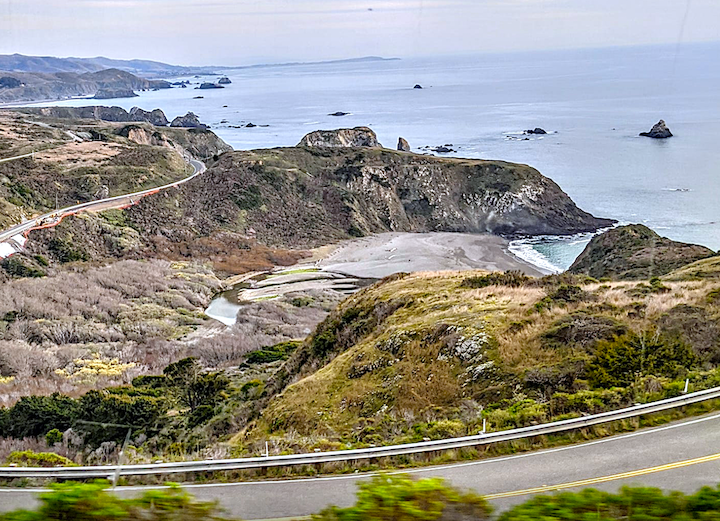
Coast Highway 1 is a serpentine thread that connects the beaches, bluffs and hamlets strung along the edge of the sea. Driving it can be a white-knuckle affair, so it was nice to be free to look out the window and watch the scenery roll by while someone experienced manned the wheel. This is the Hippie Highway that sparked songs filled with superlatives such as “California Dreamin’ and “Mendocino,” and several of the buildings in towns like Jenner, Anchor Bay, and Point Arena retain a laidback vibe of the 60’s and 70’s.
In Jenner, the bus stopped for a bathroom break long enough for me to cross the street and grab a coffee at Café Aquatica, a fragrant bakery and beanerie. From here on north, the scenery is world-class. We rolled past the coast’s man-made attractions: restored Fort Ross; the commanding 93-foot tall “Madonna of Peace” obelisk at blufftop Timber Cove resort; and the Sea Ranch Chapel, a free-flowing architectural masterpiece designed by James Hubbell and built in 1985 of locally sourced materials. But the Pacific Ocean, its vastness, and the green hills abutting it stole the show.
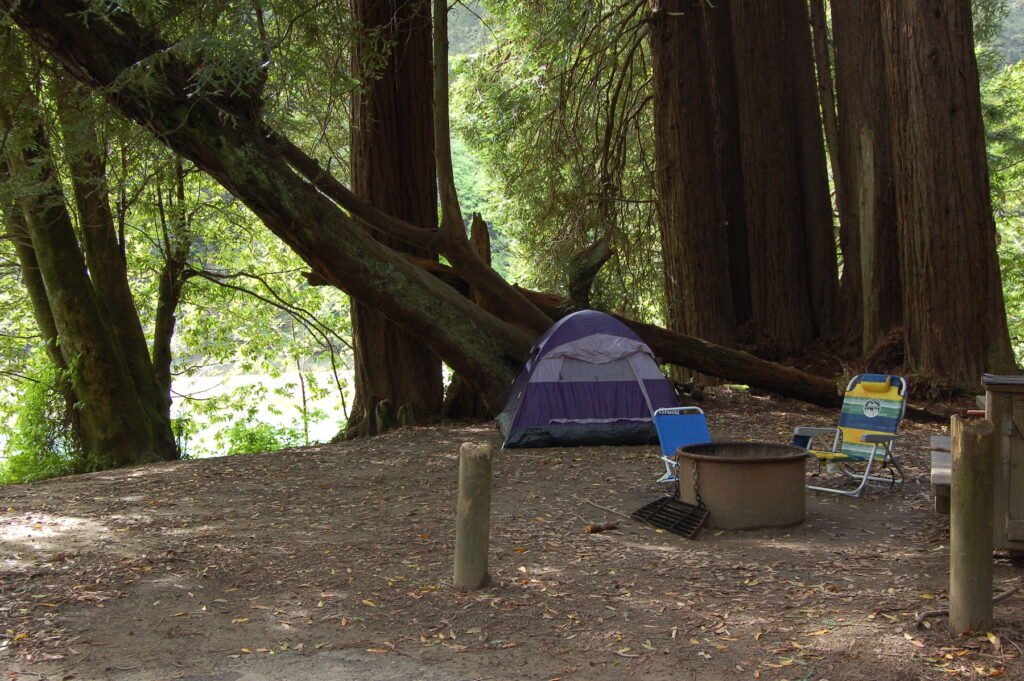
If I had been camping, Rick would have dropped me off at Gualala Point Regional Park. Instead, I stayed aboard to cross the bridge over the Gualala River into Mendocino County. Rick dropped me off at the Gualala Country Inn, my destination, at 6:45 p.m.
There was just enough time to check in for a two-night stay, drop my bags in my room and hop on my bike to ride two blocks to Trinks Cafe, a low-key locals’ eatery tucked into a small shopping mall.
Like most restaurants in town, Trinks closes at 8 p.m. Choose from a half-dozen four-star entrees including burgers, fresh seafood and salads with a fine selection of wines and superb service to top it off. Trink’s frig is stocked with yummy food and desserts to go, which you might consider for lunch tomorrow.
Gualala is a bustling town of 2,000 where coast residents stock up on groceries and catch up with one another. An historic lumber and railroad town, it is now known more for its broad sand beach, the Gualala Point Regional park with its starburst of coastal trails, and fine art displayed in galleries and the Gualala Art Center. “Downtown” is three-blocks long, and everything is within an easy ride from the hotel or campground.
Saturday morning, I grabbed an early breakfast at Trinks, then began peddling in tights, light fleece and wind jacket up the Old State Highway, signposted Gualala Street. It’s a steady climb to the local airport at 940 feet elevation, and by then I had shed layers down to a T-shirt. The main road heads north and parallels the coast on rolling terrain for more than 20 miles of woods and occasional forever views of the ocean below, though the road changes names frequently from Gualala Street to Stage Road, then Iverson Road, and Ten Mile Road. I finally turned left onto Eureka Hill Road and enjoyed a well-deserved downhill coaster ride to Riverside Drive and down to the coastal town of Point Arena where sustenance awaited.
Point Arena is an underappreciated gem of a “city” with a population of 450 and, as bus driver Rick put it fondly, “a long and tarnished history.” From its earliest settlement by whites, Point Arena was a boom and bust party town where booze flowed and brothels glowed. A major shipping port for lumber and mining supplies, it voted itself a home-rule city during Prohibition in order to sell liquor in a dry state. Its quiet cove and wharf now host a small commercial fishery and good surfing.
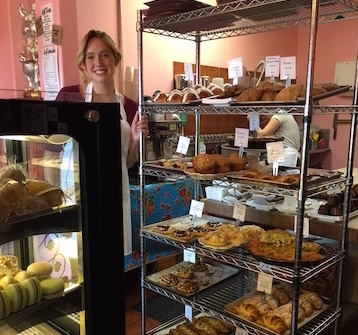
I immediately headed for Franny’s, a bakery that I had heard about and found simply by following the enticing aroma of freshly baked muffins and croissants.
Fortified by a generous slice of frittata and hot cup of coffee, I biked down to the historic harbor a mile west of downtown. Two youths donned five milimeter wetsuits, tucked surfboards under their arms and ran across the sand to ride nice waves on the right side of the pier. On the left side, a rock cod fisherman loaded his kayak with rod and net and paddled off to the nearby estuary. I walked out to the end of the pier and met the harbormaster, who pointed out the spray from gray whales out at sea. He gave me a quick tutorial on how to identify a whale by the shape of its spout when it exhales (a gray’s spout is heart-shaped, while a humpback’s is like an ice cream cone).
I rode back to town and north for five miles on the coast highway, then turned left onto Lighthouse Way, which leads directly west for a mile or so to Point Arena Lighthouse and Stornetta public lands.

Stornetta is named for the pioneering Italian dairy ranchers who still farm here, and its 1,665 acres is the most recent addition to the California Coastal National Monument. In her on-site dedication of the land in 2013, U. S. Interior Secretary Sally Jewell called it a “world-class destination for outdoor recreation.”
Here, I experienced the immensity and timelessness of sky, ocean and ancient trees. I locked my bike at the trailhead and spent the next three hours wandering the colorful bluffs, exploring tidepools and napping in the tall grass. I saw a pair of humpback whales pass so close to the cliffs that even without binoculars I could see their mottled backs rise above the water. Finally, I hopped back on the bike and rode the coast highway back to Point Arena and 14 miles down to Gualala.

On the way, I stopped for dinner in the bar at St. Orr’s, just a few miles north of Gualala. St. Orr’s is a local landmark with a story, and serves the best food around. I scarfed fish taco and seared scallops with watermelon small plates that were as a delicious to the palate as they were to the eye. Then in waning daylight I biked the last miles back to my room and a good night’s sleep after a long day.
On Sunday, I packed my bags, enjoyed the Country Inn’s hearty continental breakfast, then hopped on my bike and rode south across the bridge at Gualala River and explored the bike trails at Gualala Point Regional Park in a last two-hour commune with sky, sand and sea before returning to the hotel to check out and catch the 10:30 a.m. MTA Route 95 bus back to Santa Rosa. I was back home by 1 p.m., savoring the weekend nature retreat ride that felt days longer than it actually was.
